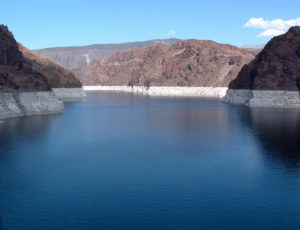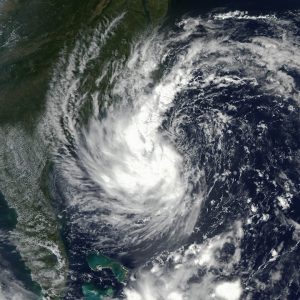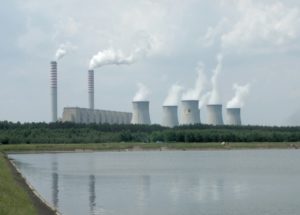
Lake Mead water levels have been dropping for decades and if the drought in the western US continues, soon the lake will no longer be able to produce hydroelectric power. This relatively clean power source is used by several western states.

With climate change, comes many changes in patterns of storms, their intensity, and potential for destruction.

Nuclear power produces no CO2 but requires significant water to cool the radioactive rods.
Human societies have an enormous thirst for energy; energy demand continues to grow rapidly as the human population increases and developing counties seek a higher standard of living. The human population has an enormous need for water to support its industry and agriculture, and of course simply to live. The Earth’s climate is changing, the result of human activity.
These manifestations—the exploding worldwide demand for energy, increasing exploitation and competition for water resources, and alteration of the planet’s climate—are tightly intertwined. They come together at the nexus of energy, water, and climate.
All processes for generating energy require consumption of water, for some processes enormous quantities. For example, in the United States, thermoelectric power plants produce 80% of the electricity generated, while accounting for around 40% of water consumed (agriculture accounts for a similar percentage). It takes water to get energy.
The inverse is also true: it takes energy to get water. It takes energy to move water from where it is stored to where it is needed. For example, 85% of electricity needs of farms are for pumping groundwater, while withdrawals from many aquifers far exceed recharge. The biggest energy consumption in California is for moving water over the mountains down to coastal cities.
An exponential increase in carbon dioxide and other greenhouse gasses in the atmosphere through burning fossil fuels is causing a gradual increase in the average temperature of the Earth. But the response of the climate system to an overall warming is exceedingly complex. Changes in atmospheric circulation patterns due to global warming are altering weather patterns and changing the distribution of water on the planet.
The frequency of certain extreme weather events is on the rise. Some areas are experiencing prolonged heat waves—and associated drought—while other areas are experiencing torrential rainfall—and associated catastrophic flooding. Such climate-related events alter availability of water and impact energy supplies and demand. The following examples illustrate this nexus.
In 2011, at the height of a prolonged heat wave and the most severe drought in Texas history, an oil refinery operated by the energy producer ConocoPhillips faced a serious problem. The plant draws the water it needs for its operation from a nearby river, but the river was drying up. The company was forced to apply for a permit to pump ground water to keep the plant running.
Northern China is in the midst of severe drought due to climate change, and to get water needed for crop irrigation, farmers are drilling wells deeper and deeper into aquifers, which are becoming depleted. The drilling of a great many wells and pumping water from them uses a tremendous amount of energy, as well as adding CO2 to the atmosphere annually equivalent to that produced by New Zealand. Water from rivers and lakes is increasingly polluted and largely unavailable to agriculture due to competition from industry and cities.
